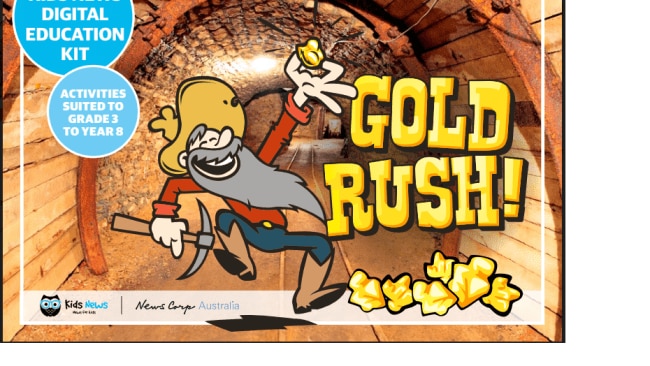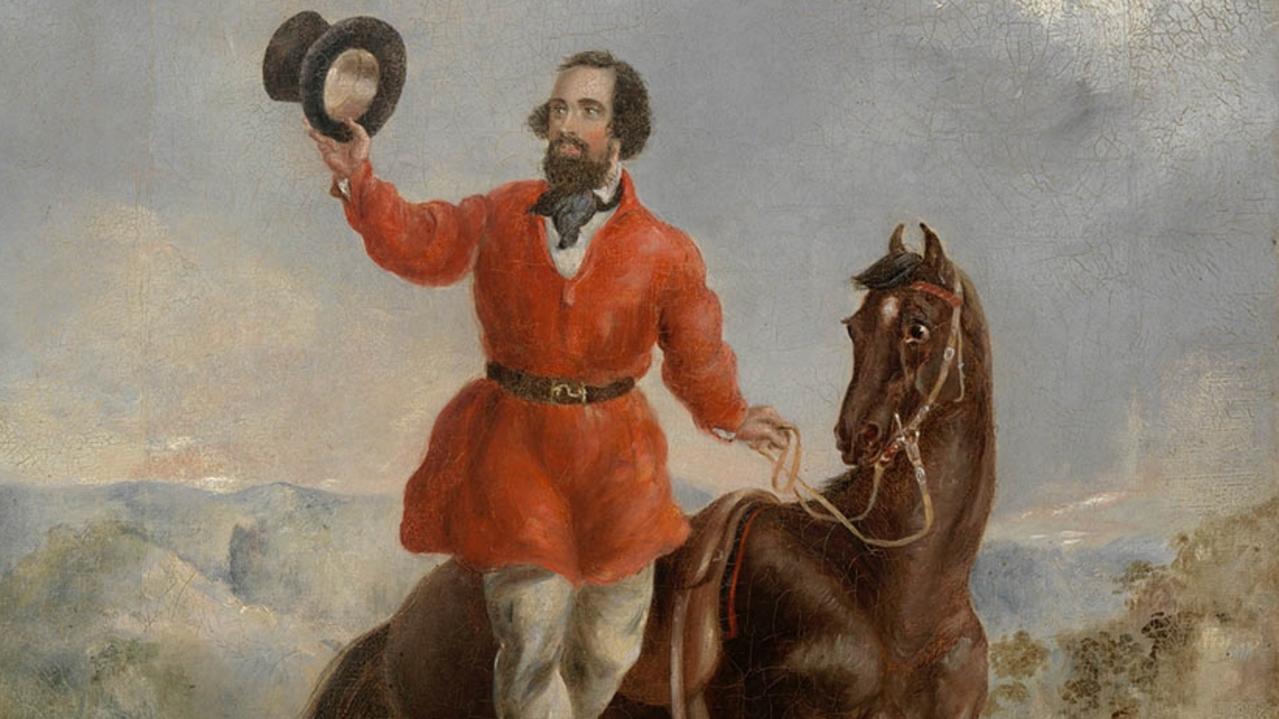There were different ways to work and make money on the goldfields other than digging for gold
GOLDFIELD JOBS: Butcher, bakers, candlemakers and every kind of shopkeeper you can imagine flourished on the goldfields while miners had money to spend.

READING LEVEL: GREEN
KEEPING SHOP
Finding a big nugget of gold wasn’t the only way to get rich on the goldfields. Unless you were strong and lucky enough to find lots of gold, you were probably more likely to get rich by becoming a shopkeeper.
According to Henry Brown, who ran a store at Bendigo: “Business did not require any very nice calculations. The plan was to usually double and treble* the Melbourne price.”
So, what would you be? A grocer selling mutton*, flour, tea and sugar?
The price of flour soared during shortages. At times, it would take more than 30 ounces of gold to pay for two weeks’ flour supply. In October 1852, William Howitt paid 20 pounds for a sack on the diggings – and it turned out to be gritty, full of lumps and riddled* with weevils*.
Only those who struck it rich could afford to buy fancy foods, such as dried fruit, cheese and butter. In a letter sent to an Adelaide newspaper, a miner joked: “The price of a biscuit is 7d (pence), a pint of water 2d, and the charge for looking at a cheese 3d.”

If you had a shop on the goldfields, perhaps you’d be a butcher, a baker or a candle maker? Would you sell fancy clothes that people treated themselves with when they struck it rich? Or what about tents, shovels, picks, gold pans and wheelbarrows? Everyone needed those.

WOMEN’S WORK
More than 160,000 women were among the 600,000 who arrived in Victoria between 1851 and 1860. Those who were married looked after their husbands, because that was what was expected. They cooked, washed, made soap, sewed, carried water, cleaned, looked after children, helped other women give birth to their babies and mined for gold, too. They were very busy.

But although life was hard, the rules of society were a little different on the goldfields to elsewhere and women had freedoms they couldn’t have imagined in their former lives. Some of the most successful shopkeepers, hotel owners, cooks, boarding house* owners and entertainers were women.

TEACHERS
Anyone could become a teacher if they had children to teach. The government set up a few schools, but most of the early goldfields schools were privately run by a teacher or a group of parents, who paid the teacher.
In the early years of the Gold Rush, you could hardly call them schools. They were sometimes just in the teacher’s canvas tent or in the shade under a tree.
Teachers didn’t get paid much and they often had big classes of kids who had missed a lot of time at school and were at all different stages of learning. It can’t have been easy being a teacher.

Ideas about how children should learn were different to today. Children practised beautiful, fancy, joined-up handwriting, times tables, reading and maths called arithmetic and if they didn’t get everything right or broke the rules the teacher was allowed to hit them.

EXTRA READING
Miracle cures and other crazy ideas
FOR ALL GOLD RUSH STORIES, click HERE
GLOSSARY
- treble: triple, or three times
- mutton: meat from older sheep
- riddled: lots all the way through
- weevils: small beetle that eats and nests in flour
- boarding house: accommodation like a B&B
LISTEN TO THIS STORY
25 CLASSROOM ACTIVITIES
For 25 classroom activities on this story and much more, go to kidsnews.com.au/goldrush to purchase the Gold Rush workbook for $20 inc GST.
SOURCES
- National Museum of Australia, nma.gov.au
- National Library of Australia, nla.gov.au
- State Library Victoria, slv.vic.gov.au
- State Library of NSW, sl.nsw.gov.au
- SBS, sbs.com.au/gold
- KidCyber, kidcyber.com.au/gold-rush-in-australia
- Growing up on the Australian Goldfields by Kimberley Webber, bit.ly/2nfbbqw
- Sovereign Hill, sovereignhill.com.au and sovereignhilledblog.com

